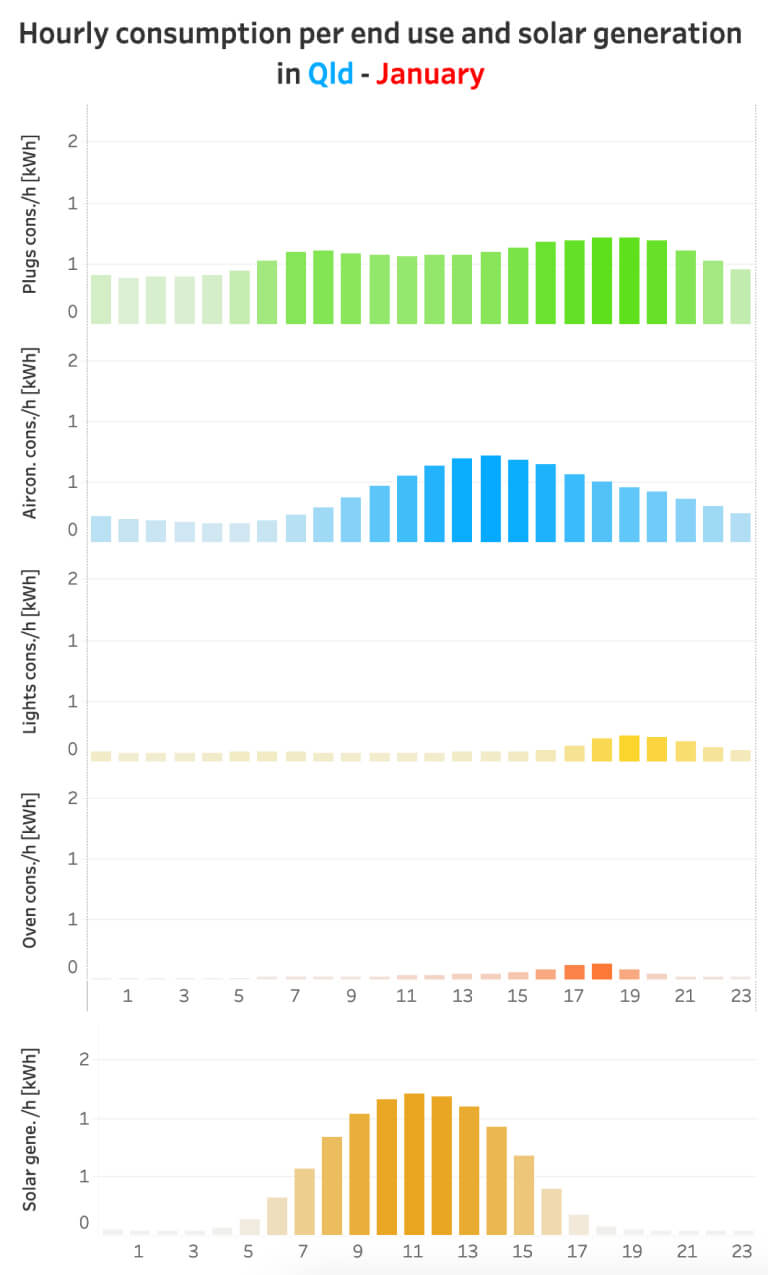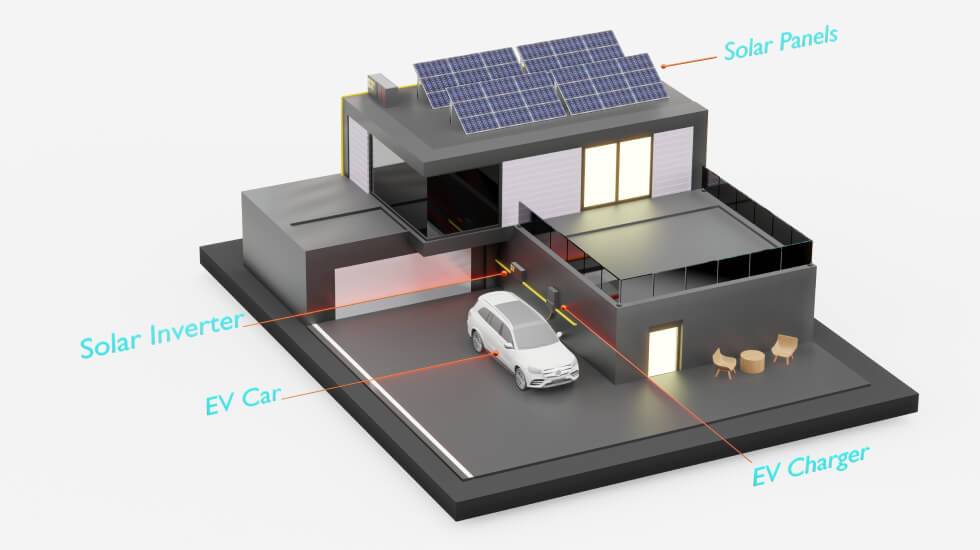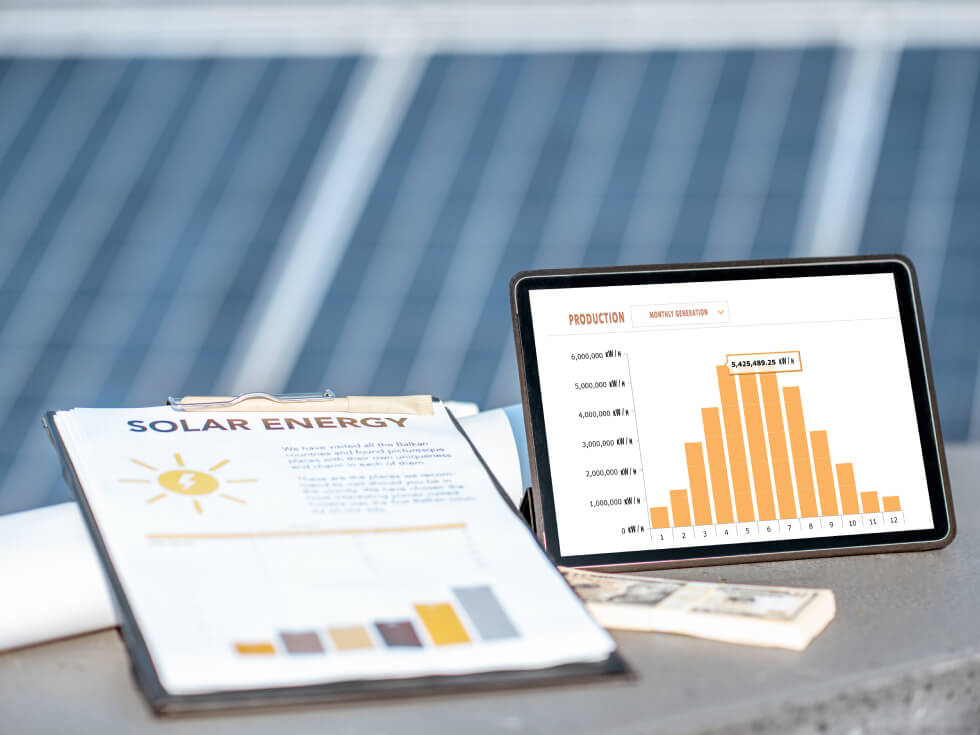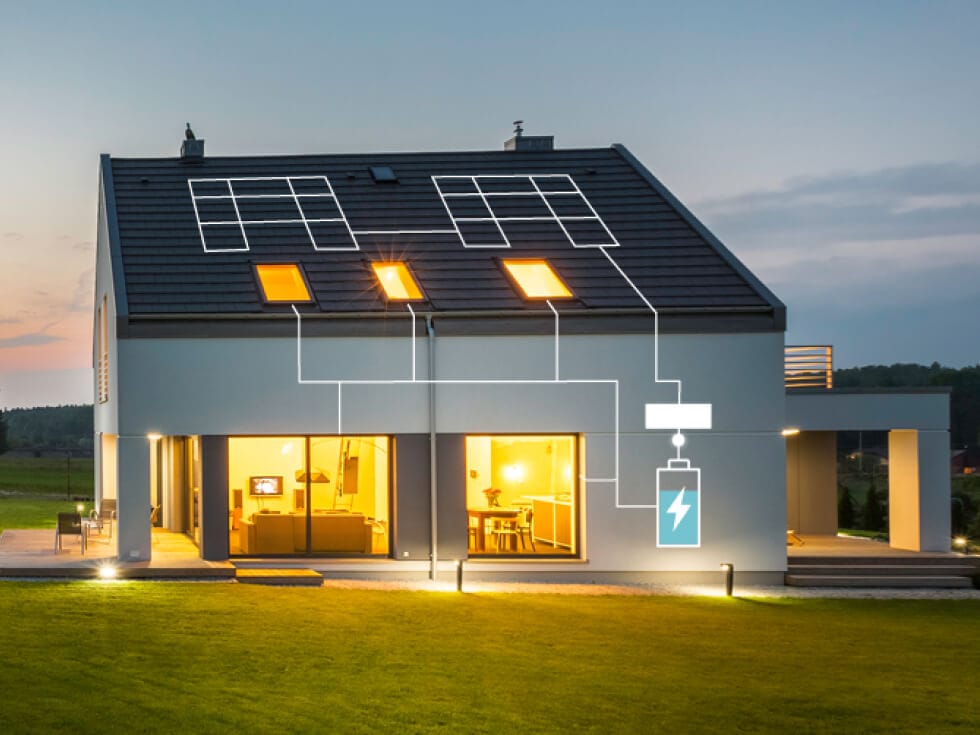Have you ever wondered if your solar panels are truly living up to their potential? As Aussies, we’re blessed with abundant sunshine, but many of us aren’t harnessing its full power.
Investing in a solar system is a great first step toward lowering your electricity bills and reducing your carbon footprint. The next logical step is to maximise the effectiveness of your system and ensure you are getting the most out of it.
Many people think that maximising solar efficiency means generating more electricity with better panels or larger systems. However, it’s also about optimising how you use the energy you generate. While maintaining your system for optimal performance is crucial, simple actions like adjusting your daily habits or investing in energy-efficient upgrades can greatly boost your solar system’s effectiveness and increase your savings.
Ready to supercharge your solar savings? Let’s dive into the nitty-gritty and discover how to turn your home into a lean, green, energy-efficient machine.
Key Takeaways
- Use energy-hungry appliances during peak sunlight hours
- Upgrade to energy-efficient systems compatible with solar power
- Consider a solar battery to store excess energy
- Maintain your solar system regularly for top performance
- Transition to an all-electric home to maximise solar potential
- Monitor and optimise your solar energy production
Solar Energy Basics
Solar panels convert sunlight into usable electricity through photovoltaic cells. These cells absorb photons from sunlight, releasing electrons that flow as electric current. This process forms the backbone of solar energy production across Australia and around the world.
Peak generation hours and efficiency
Solar panels reach their peak efficiency between 10 am and 3 pm. The orientation of your panels affects their performance throughout the day:
- North-facing panels: Most efficient from 10 am to 3 pm
- East-facing panels: Peak performance from 8 am to 11 am
- West-facing panels: Highest output from 3 pm to 6 pm
Factors affecting solar energy production
Several elements impact the effectiveness of your solar energy system:
- Roof orientation: Determines exposure to sunlight
- Seasonal changes: Affect sun angle and daylight hours
- Local weather: Cloud cover can reduce energy production
- Household electricity usage: Influences system sizing needs

Optimising Solar Panel Installation
In Australia, north-facing panels typically capture the most sunlight. But east or west orientations can be great for homes using lots of power during peak times. The right solar panel orientation boosts solar energy efficiency significantly.
Importance of Professional Installation
Expert solar panel installation ensures your system performs at its best. Professionals consider factors like roof angle, local climate, and shading to optimise placement. They also handle electrical connections safely, ensuring your system meets all regulations.
Overcoming Shading Issues
Shade can seriously impact solar energy production. Regular maintenance is key to keeping your panels in top shape. Trim trees and bushes near panels to prevent shadows. For safety, it’s often best to hire pros for panel cleaning and tree trimming.
| Panel Orientation | Energy Production | Best For |
| North-facing | Highest overall | Most households |
| East-facing | Morning peak | Early energy users |
| West-facing | Afternoon peak | Evening energy users |
Matching Energy Consumption with Solar Production
Maximising solar power efficiency starts with aligning our energy use to peak solar production times. By adjusting our daily habits, we can make the most of our solar energy system and reduce our carbon footprint.
Peak solar generation typically occurs between 10am and 3pm. We should aim to use energy-intensive appliances during these hours. This might mean running the washing machine or dishwasher at midday rather than in the evening.
Staggering appliance usage throughout the day helps prevent overwhelming the system. Instead of running multiple high-energy devices simultaneously, we can spread their use across sunlight hours.
Many solar energy systems come with monitoring tools that allow us to track production and usage. By analysing this data, we can fine-tune our habits for optimal efficiency.
| Time | Solar Production | Recommended Activities |
|---|---|---|
| 6am – 10am | Low to Moderate | Light cooking, charging devices |
| 10am – 3pm | Peak | Laundry, dishwashing, air conditioning |
| 3pm – 7pm | Moderate to Low | Light household tasks, TV watching |
| 7pm – 6am | Minimal to None | Essential nighttime activities only |
Smart home technology can automate appliance usage to coincide with peak solar production. This takes the guesswork out of energy management and further boosts our solar power efficiency.
Lastly, we must be mindful of energy waste. Turning off lights in empty rooms and running full loads of laundry are simple yet effective ways to optimise our solar energy system’s performance.

source: https://ahd.csiro.au/other-data/typical-house-energy-use/
Energy-Efficient Appliances and LED Lighting
Implementing energy-saving measures can be both simple and highly effective. Simple actions, such as switching to LED lighting and using smart thermostats, can make a noticeable difference. More comprehensive upgrades, like replacing old appliances with energy-star rated models and integrating smart home technology, can help lower your overall household expenses and further reduce your energy bills.
Upgrading to Energy-Star Rated Appliances
Replacing old appliances with energy-star rated models is a key step in the clean energy transition. These appliances use less power, reducing our overall energy consumption and allowing us to make the most of our solar energy production.

Source: Australian Government – Department of Climate Change, Energy, the Environment and Water website
Benefits of LED Lighting for Solar Homes
LED lights are a game-changer for solar-powered homes. They use up to 90% less energy than traditional bulbs and last much longer. This significant reduction in power usage means we can allocate more solar energy to other household needs, improving our overall solar energy efficiency.
Smart Home Technology Integration
Embracing smart home technology takes our sustainable living efforts to the next level. We can control appliances remotely, ensuring they run during peak solar production hours. This synchronisation between energy generation and usage is crucial for maximising solar energy efficiency.
| Technology | Energy Savings | Lifespan |
|---|---|---|
| Energy-Star Appliances | 15-30% | 10-20 years |
| LED Lighting | 75-90% | 15-25 years |
| Smart Home Systems | 10-25% | 5-10 years |

Implementing Solar Battery Storage Solutions
Solar battery storage is revolutionising how we use solar power. By storing excess energy, these systems allow us to maximise our solar investment and reduce reliance on the grid. Let’s explore the key aspects of implementing solar battery storage solutions.
Types of Solar Batteries Available
There are several types of solar batteries on the market, each with unique features. Lithium-ion batteries are popular for their efficiency and longevity. Lead-acid batteries offer a more budget-friendly option but have a shorter lifespan. Flow batteries are emerging as a promising technology for larger-scale storage needs.
Sizing Your Battery System
Proper sizing is the backbone of optimal solar battery storage. We need to consider our daily energy consumption and solar panel output. A well-sized system can help us use 50-60% of our generated energy, compared to just 25% without storage. This increase in self-consumption significantly impacts solar power costs over time.
Maintaining Your Solar Energy System
Regular solar energy system maintenance is key to maximising solar power efficiency and embracing sustainable living. We recommend servicing your system every 1-2 years by a licensed A-Grade electrician to ensure optimal performance. Additionally:
- Monitor your energy production. Check your bills and inverter readings against expected output and weather conditions. This helps identify any issues early on and ensures your system is performing as expected.
- Clean your solar panels. Aim to clean them twice a year, ideally in late spring and autumn. If you live in dusty areas or near construction sites, more frequent cleaning may be necessary.
- Keep an eye on nearby vegetation. Trim any trees or plants that might cast shadows on your panels. Shading can significantly reduce your system’s output, impacting your solar power efficiency.
By following these maintenance tips, you’ll ensure your solar energy system operates at its best. Regular care not only boosts performance but also extends the lifespan of your investment.
Transitioning to an All-Electric Home
Embracing the clean energy transition means rethinking our home energy systems. All-electric homes offer a path to maximise solar power cost savings. Let’s explore how this shift can benefit Australian households.
Benefits of Eliminating Gas Appliances
Switching from gas to electric appliances is a key step in the clean energy transition. It reduces reliance on fossil fuels and allows homes to fully utilise their solar power systems. This change improves indoor air quality and safety by eliminating gas leaks and combustion by-products.
Electric Alternatives for Heating and Cooking
Modern electric appliances offer efficient alternatives to gas:
- Induction cooktops provide precise temperature control and faster cooking times
- Heat pump systems offer both heating and cooling with high energy efficiency
- Electric hot water heat pumps can slash water heating costs
Long-term Cost Savings of All-Electric Homes
The transition to an all-electric home supports sustainable living and leads to significant solar power cost savings over time. By powering appliances with solar energy during the day and stored battery power at night, households can dramatically reduce their energy bills. This approach not only saves money but also contributes to a cleaner, greener future for Australia.

Monitoring and Optimising Solar Energy Performance
We can’t stress enough the importance of keeping a close eye on your solar system’s performance. Regular monitoring helps ensure optimal solar energy efficiency and maximise your return on investment. Many solar power companies offer online tools that make it easy to track your energy usage and production.
By continuously assessing and adjusting our energy consumption habits, we can make the most of our solar power systems. This ongoing process helps us maximise the benefits of solar energy while minimising our reliance on grid electricity. Remember, small changes in our daily routines can lead to big savings over time.
Need help optimising your energy consumption?
Book an energy audit with Tenmen Electrical
Get a comprehensive home energy audit that will not only help you identify energy-wasting points, but also propose actionable solutions to optimise your energy consumption without compromising your comfort and potentially reduce your power bills by up to 80%.
From suppliers to lighting, HVAC, hot water, solar, and pools, we provide numerous money-saving options while keeping your home cozy. We will assess your energy usage, identify areas of inefficiency, and offer tailored recommendations for optimising energy consumption.










